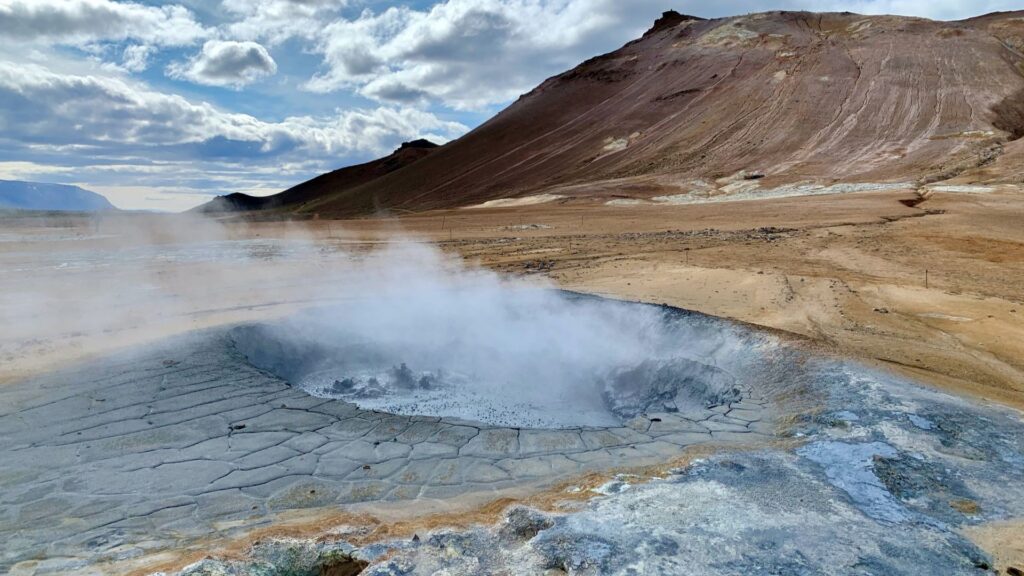Sign up to receive newsletter updates from Accelerate on LinkedIn.
How to survive in a CAPEX-Constrained World
With capital expenditures under a microscope, tariffs tying up global supply chains, and selective budgets slowing down decisions, the pressure to deliver smarter, faster, and cheaper simulations is mounting.
In an era marked by financial prudence, the emphasis is on achieving more with less. Strategic investments in the right software tools can lead to significant CAPEX reductions, operational efficiencies, and a competitive edge. As the industry navigates these turbulent times, the focus must remain on making informed, strategic decisions that balance immediate needs with long-term objectives.
And here’s the twist: many producers are still running the race with their shoelaces tied together.
In this edition of Accelerate, we explore how today’s leading operators are unlocking efficiency, confronting persistent asset-level challenges, and reducing CAPEX — not by spending more, but by planning smarter with their softwares.
The CAPEX Conundrum: Inefficiency Is the Real Expense
In a CAPEX-constrained environment, inefficiency isn’t just inconvenient — it’s expensive. Many operators continue to rely on fragmented workflows, outdated planning tools, and siloed data environments that undermine their ability to act decisively and cost-effectively. The result? Misaligned strategies, costly rework, and delayed decisions.
We’re seeing producers shift away from this. Not just because they want to — but because they have to.
A prime example is Matador Resources, which recently sold off its remaining Eagle Ford assets as part of a larger strategy to “fortify” its balance sheet and prepare for “turbulent times.” Rather than spread capital thin across non-core assets, the operator is consolidating around its most productive acreage in the Delaware Basin — applying proceeds to reduce debt and hedge against rising costs from tariffs and inflation. Notably, Matador has also structured its rig contracts with flexible options — allowing it to scale activity up or down as market conditions shift.
(Source: Oil and Gas Journal April 2025)
This type of precision decision-making is becoming the new standard. Capital discipline isn’t just about spending less — it’s about allocating more effectively. In many cases, the opportunity to unlock significant savings (we’re talking up to 25% reduction in CAPEX) lies in better planning tools, tighter integration between reservoir and surface modeling, and earlier simulation involvement in the decision chain.
Capital efficiency is no longer a competitive advantage — it’s a requirement.
And as the Matador example shows, the producers best positioned to weather volatility aren’t the ones spending the most — they’re the ones optimizing what they already have.
Tariffs, Turbulence, and the New Reality
Smaller players — especially those operating in high-cost or low-margin basins — are getting squeezed the hardest. With steel prices rising due to ongoing tariffs, and supply chain delays still lingering post-pandemic, even routine well operations are becoming harder to forecast and more expensive to execute.
The cost to drill a single well now ranges from $6.6 million to $8.1 million. Multiply that across a typical pad — which may hold anywhere from 6 to 40 wells — and it’s clear how even minor inefficiencies can compound into tens of millions in overspend.
A small change in well spacing, lateral length, or facility design — if made late — can trigger redesigns, permitting delays, or even production shortfalls that push projects off-track and over budget.
This is where simulation proves its value. When applied early and across the entire planning chain — from reservoir modeling and fracture design to facility layout and production forecasting — simulation does more than reduce risk. It actively protects capital.
It ensures that every dollar spent is working harder:
- Fewer unnecessary wells and smarter decisions about which wells to drill, where to place them, and how to design for maximum production.
- Right-sized facilities.
- Lower infrastructure costs.
- Faster time-to-first-oil.
- And fewer surprises once execution begins.
In this new reality, simulation isn’t a technical luxury — it’s a financial safeguard. And the companies treating it as such are the ones moving forward, even as others hold back.
Companies are already realizing the benefits of integrating advanced simulation and AI into their operations. Devon Energy, for instance, uses machine learning models to monitor each of its oil rigs across the U.S. — a move that has resulted in a 25% improvement in the productive life of its oil and gas wells.
Meanwhile, BP is using AI to accelerate offshore decision-making. By applying machine learning to seismic interpretation in the Gulf of Mexico, the company has reduced processing time from 6–12 months down to just 8–12 weeks. This speed allows geoscientists to more quickly pinpoint optimal drilling locations and better anticipate operational challenges.
(Source: Reuters, March 2025)
Doing more with less is a necessity in the current market.

Debottlenecking by Design: A $250 Million CAPEX saving
Earlier this year, a Supermajor Operator faced repeated delays on a multi-pad unconventional project.
The root problem wasn’t subsurface uncertainty — it was infrastructure cost.
Modeling scenarios through a fully integrated reservoir and production solution uncovered an optimized well spacing and pad configuration that reduced surface infrastructure needs by over $250 million.
Simulation wasn’t just a planning tool — it was the reason the project moved forward.
Software Isn’t Just a Line Item. It’s a CAPEX Strategy.
In today’s selective capital environment, software isn’t just another budget line — it’s a strategic lever. Forward-thinking companies are now evaluating their digital tools with the same scrutiny as drilling programs and surface infrastructure.
The new benchmark is simple:
If your software isn’t directly reducing CAPEX, it’s increasing it.
Ask yourself:
- How many wells did our last simulation avoid or optimize?
- How much time did we save during planning and approvals?
- How much surface infrastructure was right-sized through modeling?
- What’s our current cost per incremental barrel — and how can we improve it?
Now take it a step further.
How are you addressing the 10 most pressing asset-level inefficiencies — the ones that directly impact capital allocation and long-term value?
- Full-cycle production and economics uplift
- Debottlenecking and surface facility design improvement
- Maximizing plateau production for offtake and sales agreements
- FPSO design and tieback optimization
- Long-term CAPEX forecasting for asset lifecycles
- CO₂ injectivity, containment, and risk management in CCS
- EOR planning across conventional and unconventional plays
- Gas reinjection strategy and breakthrough prevention
- Artificial lift design and performance tuning
- Waterflood optimization and produced water management
If your current tools can’t support these decisions with clarity and speed — you’re not just missing efficiencies. You’re potentially misallocating millions.
Consider this: in the Gulf of Mexico, a project like Shell’s Whale asset — designed for peak oil production of 100,000 bbl/day — could see a 5–15% uplift in production simply by using modern, integrated reservoir and production modeling. Even at the low end (5%), and at $70/bbl, that translates to $127 million in additional revenue — not including OPEX savings from improved operational efficiency.
And the cost to enable it? Just a fraction of a fraction of the value created — in one case, estimated at only 0.0002% of the prize.
For asset managers and operators, this isn’t a luxury — it’s a serious strategic lever in CAPEX optimization.
When software is viewed through the lens of real-world asset performance and capital discipline, the conversation shifts from “Can we afford this?” to “Can we afford not to?”
Regional Snapshots of the CAPEX-landscape:
Around the world, project approvals hinge on smarter planning, faster insights, and measurable returns. While the market dynamics vary, the mandate is consistent: optimize what you have before you ask for more.
Here’s how that pressure is playing out region by region:
- North America: As policy support for energy transition projects wanes and oil prices soften, operators are pivoting. LNG activity is rising, and EOR is re-emerging in unconventionals — but only for those with the foresight to simulate before they spend.
- LATAM: Despite Pemex’s ongoing challenges, the region is heating up. FPSO developments and new unconventional plays demand simulation-first decisions that reduce risk and improve fracture planning.
- Europe: With energy security top of mind and CCS momentum intact, simulation is critical for balancing short-term cost control with long-term sustainability mandates.
- Africa: West Africa’s FPSO boom and Libya’s re-opening are creating opportunity — but unlocking it requires clarity in uncertain conditions. Simulation brings confidence to high-risk environments.
- Middle East: With Aramco doubling down on gas and ADNOC restructuring CCS assets, the focus is on scale with discipline. EOR interest is growing, but only if it pencils out — which means better cross-domain planning.
Projects don’t get funded because they’re big. They get funded because they’re smart. Producers that can plan faster, simulate more accurately, and optimize across subsurface and surface constraints are moving ahead — while others wait.
The opportunity isn’t just to weather the storm, but to gain ground during it. Because in today’s CAPEX-constrained world, precision is the new pace. And efficiency is the new edge.
Facing Uncertainty with Confidence
The world may be flirting with volatility, but your field development plans don’t have to. In an era defined by tariffs, delays, and shrinking budgets, the most important investment you can make is in the ability to make better, faster, more informed decisions.
Smarter planning and software reduces CAPEX, streamlines operations, and drives long-term OPEX savings. By aligning capital decisions with reservoir performance—not short-term output—producers avoid overbuild, minimize rework, and unlock billions in potential lifecycle value.
Simulation is a means to an end, which is increased oil production.
Let others speculate. Let others wait.
You have wells to optimize, infrastructure to scale down, and millions in CAPEX to save.
Because in today’s CAPEX-constrained world, precision is the new pace. And efficiency is the new edge.







